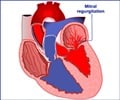Mayo Clinic researchers say that the challenge of controlling heart disease among people may be greater than is commonly thought.
Cardiologist Francisco Lopez-Jimenez says that a study has revealed that the positive U.S. health trend documented over the past 30 years of reduction in risk for heart disease is not as strong as is widely perceived. According to him, the trend has instead flattened."This study may surprise people because the data show that the risk of heart disease is not going down as we expected. The estimated risk in our nation was coming down nicely in the 1980s. Then around 2000 it began changing - the trend lines flattened. While we had done a nice job with lowering cholesterol, blood pressure and stopping smoking, over time the improvement in these risk factors slowed and others like diabetes and obesity emerged, threatening to undo the early progress we made in reducing risk of heart disease. Most of the gains in reducing heart disease risk have been offset by the increased prevalence of diabetes and obesity," he says.
While making a presentation at the American Heart Association's Scientific Sessions 2008 in New Orleans, he claimed that his team's study was the first to suggest that not as much progress against heart disease is being made in recent years, despite the efforts by many organizations to promote healthy lifestyles, and the wide availability and lower price of many cholesterol and blood pressure-lowering drugs.
"This is highly relevant to public health because most people think the risk of heart disease is going down steadily and has for the past 30 to 40 years -but our data show something different," Dr. Lopez-Jimenez said.
"The fact is that despite all the wonderful things we've done - all the changes in fat consumption, the promotion of exercise, the quitting smoking, treatment of high cholesterol and blood pressure - it doesn't appear to be enough; the risk reduction we did achieve early on in the 1980s has gone flat, and we need to change that," he added.
For their study, the researchers compared national heart disease risk factor data from three time periods to track change over time in risk reduction.
Advertisement
The team said that comparing changes from the early stage to the midpoint documented a decline in the overall risk to develop heart disease, but comparing change from the midpoint to the late period showed the trend flattening.
Advertisement
He said that for women, in particular, the age-adjusted risk declined from the early period to the midpoint, but stayed flat from the midpoint to the late period.
He also said that when age groups were compared, the average predicted risk for those ages 30 to 49 stayed flat from the midpoint to the late period compared to people age 50 and above.
Source-ANI
SPH















